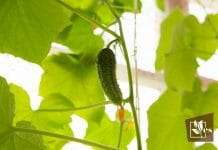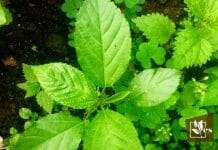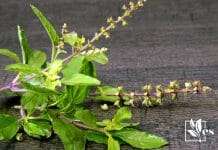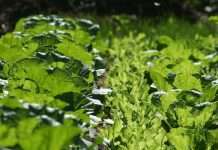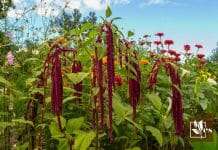- 7 Fruit Trees for Zone 9: The Perfect Fruit Garden - March 30, 2024
- How To Revive a Dying Avocado Tree: 9 Best Steps To Follow - March 30, 2024
- 8 Belt Dressing Alternatives: A Variety of Options - March 30, 2024
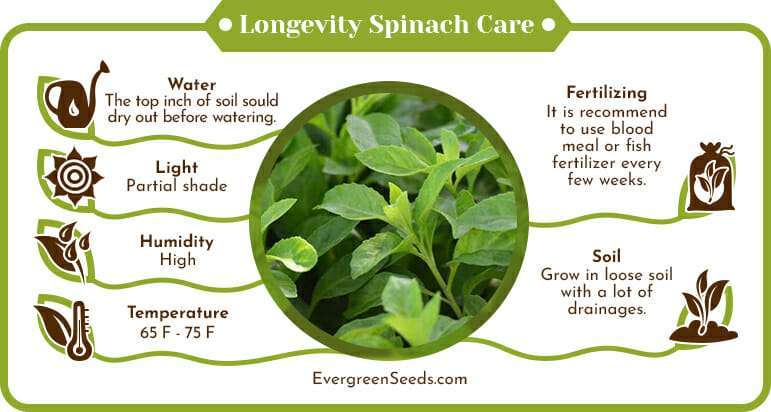 Longevity spinach of the Asteraceae family, also known as Gynura procumbens, is growing in popularity thanks to its benefits as green, leafy spinach!
Longevity spinach of the Asteraceae family, also known as Gynura procumbens, is growing in popularity thanks to its benefits as green, leafy spinach!
If you are wondering what longevity spinach leaves do and how to grow them successfully, read on. This article will tackle the things you should know about longevity spinach of the Gynura genus and how to care for them indoors.
JUMP TO TOPIC
What Is Longevity Spinach?
Longevity spinach, also known as the longevity green, is a veggie plant famous worldwide but primarily found in Africa, China, and Southeast Asia. It would thrive in areas that have tropical climates, being native in terrestrial, warm locations and habitats.
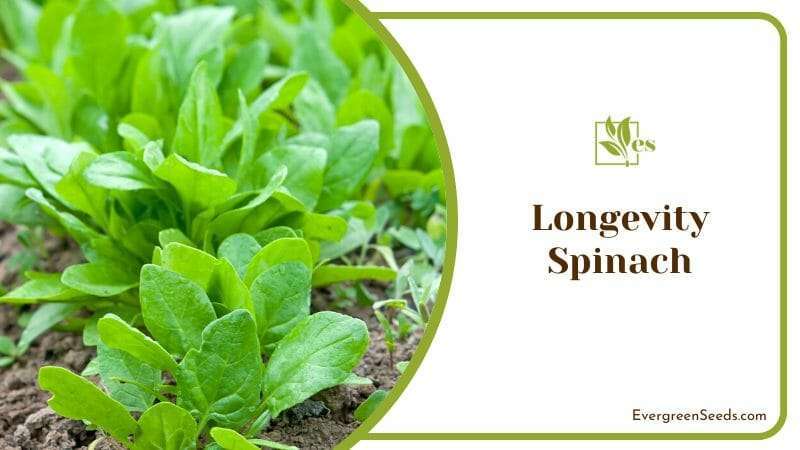 These are low-growing plants that spread on grounds it grows on, though you can grow them from pots. One can also think of them as semi-succulents, which are plants with thicker parts. It is very different from the Chinese spinach and the Egyptian spinach.
These are low-growing plants that spread on grounds it grows on, though you can grow them from pots. One can also think of them as semi-succulents, which are plants with thicker parts. It is very different from the Chinese spinach and the Egyptian spinach.
It is from kingdom Plantae, under the Compositae family and genus Gynura, carrying the specific name, Gynura procumbens. Confuse not longevity spinach for anthurium!
– Basic Features
Longevity spinach grows to a maximum height of 12 inches, with a minimum height of 6 inches. Come spring season, the plant would grow flowers, showing orange inflorescences on its axillary stem.
This makes the plant an angiosperm, meaning they are flowering seed and dicotyledonous plants. Many gardeners love the fragrance, while others report an unpleasant odor. Depending on your taste, you might want to remove these flowers during their bud stage, making way for optimum leaf growth.
The plant would grow to a herbaceous shrub, smaller than trees and with stems rising from the ground. It has short, soft, and rectangular stems that are cross-sectional and wavy. Furthermore, it is a perennial with a long lifespan that produces spinach for years. Whether you plant them in the garden or pots, longevity spinach will thrive and survive all year long.
One significant benefit and feature of this plant is that it is autotrophic, capable of manufacturing nutritious organic complex compounds. Beneficial complex compounds are made with simple compounds, which come from carbon dioxide, nitrates, and water.
– Leaves
The leaves of the longevity spinach are fleshy and smooth, rounder in shape to ovate, with greenish on the upper side, while it is purplish underneath. The leaves have a width of 1.3 inches and a length of 3 inches.
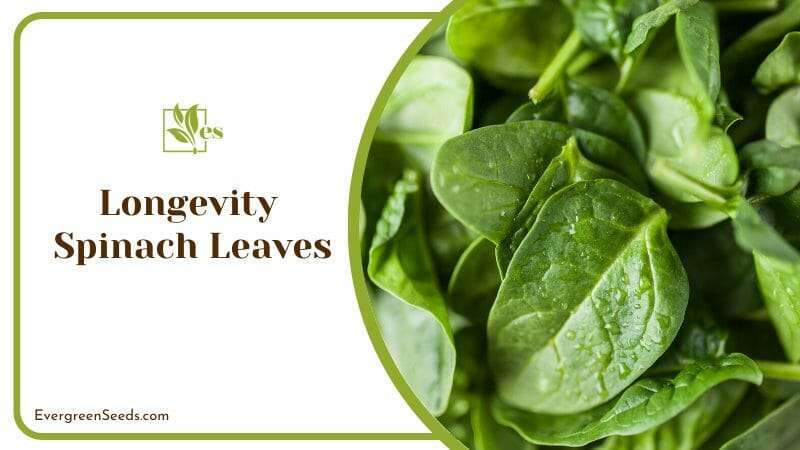
– Side Effects of Eating Them
There are no severe side effects when consuming longevity spinach unless you are allergic to this particular vegetable. If you are prone to food allergies, you can eat one small leaf and see how your body reacts to it.
If eaten in substantial amounts, it may cause diarrhea, which happens when consuming other green leafy vegetables. Keep your portions to about 10-15 leaves a day, which can help you reap its many health benefits. For those who aren’t keen on the taste yet, you can get started with five to eight leaves daily.
– Are They Invasive?
Suppose it is in the ideal climate and soil conditions. In that case, there is a possibility that longevity spinach can “go wild,” taking up more space than you have to offer. It won’t choke other plants, but it may be mildly invasive if not kept under control.
Not to worry, though, as it’s easy to control the growth of longevity spinach plants. Harvest it regularly, whenever you see leaves are mature and ready to be consumed! That way, the plant becomes bush-like and will not spread out as much, so you can contain the area where it grows.
– Toxicity Levels
Since this spinach is great for diets, you won’t have to worry about its toxicity levels.
Children and pets can consume them in smaller portions, and they can even benefit from this vegetable! There’s nothing to worry about if they accidentally ingest or touch it, so feel free to display it wherever you want (as long as the pots or containers aren’t breakable or hazardous).
How To Grow Longevity Spinach
When growing longevity spinach indoors or outdoors, you should know that they are hardy, growing well in indoor and outdoor environments. When you grow them outdoors and spread them, they trail up or cover the ground. You can also trim them to grow more like bushes. If they grow in a pot, you can clip them.
Regardless of where you place them, longevity spinach has its nutritional requirements that must be met, especially when it comes to water, light, and quality of soil for longevity spinach. It is also essential to consider your location’s climate.
As for growing it indoors, the next section will talk about the optimum longevity spinach growing conditions.
– Growth Habit of the Plant
The plant is a perennial trailing vine with its stems green, snapping quickly if bent. Make sure that you cut its tups regularly to grow as a small bush instead.
As it grows and becomes older, the base thickens and turns brown. The leaves will bear an opposite pattern, with older leaves growing 6 inches long. You can see that the edges of leaves have significant serrations that aren’t noticeable.
When the stem trails along, the ground roots grow to the soil from parts of its stem, growing up to 1-2 feet with its stems growing 15-20 feet long. This is why the plant is good ground cover. If it has nearby support, the stems may rest on them, though they won’t grow tall without proper help.
Also, these plants grow very quickly. Once it reaches 2 feet in height, it will grow even quicker until you’re ready to harvest and eat its leaves!
– How To Grow Longevity Spinach Indoors
The requirements of longevity spinach indoors are similar to those outdoors.
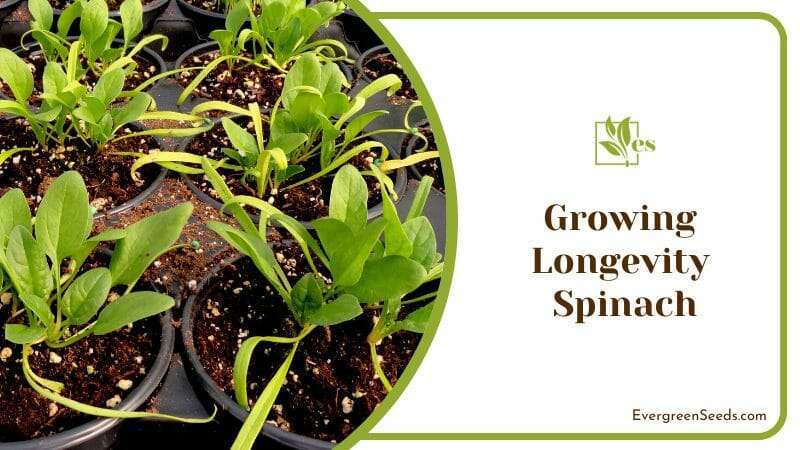
Here is what you need to know:
1. Recommended Soil
For optimum growth, you should grow longevity spinach in loose soil with a lot of drainages. If your plant suffers from poor drainage, it becomes soggy, resulting in root rot. However, your soil should also have the right amount of moisture to prevent the roots from drying out.
It would help if you found balance in your soil type and quality, which might be challenging. Fortunately, longevity spinach isn’t picky in terms of soil type. You have to focus more on getting rich soil that has adequate drainage possibilities. Afterward, consider putting used tea leaves or coffee grounds to supplement it.
While it can grow on boor and dry soil while coping under full sun, the growth will be very slow.
2. Where To Place It
You can plant longevity spinach in pots for your convenience. Just ensure that the pots you plan to use are around 1-2 feet deep to give roots some room.
You can keep two or three plants in one pot, but remember that they might compete for nutrients and moisture in the soil. If you have too many plants in one pot, it can cause all of them to become rootbound, which stops their growth. To prevent this, check on them regularly, thinning them as needed.
When planting multiple plants outdoors, space them at intervals of 2 feet, as they would create a dense mat after a few months. You wouldn’t want them competing for nutrients!
3. When To Plant
You can find longevity spinach from various garden suppliers. They may be a bit difficult to find, depending on the state you’re in. However, they can easily be bought online or in local gardening stores.
The longevity plant prefers warm climates and is sensitive to frost. If you expect late frost after planting, cover your plant with old sheets or frost cloths. This is to ensure they are covered entirely and that it’s secure at the ground level, around the stems. You can also move the plant indoors instead, particularly during freezing weather.
Typically, the best time to plant it is in March, and you can expect it to bloom by mid-July to early August. Again, this depends on where you live, the temperatures your location experiences, and the dates of frost and growth seasons.
How To Care for Longevity Spinach
When you created the ideal environment for your spinach and have grown it well until it mature, what else should you know about caring for it?
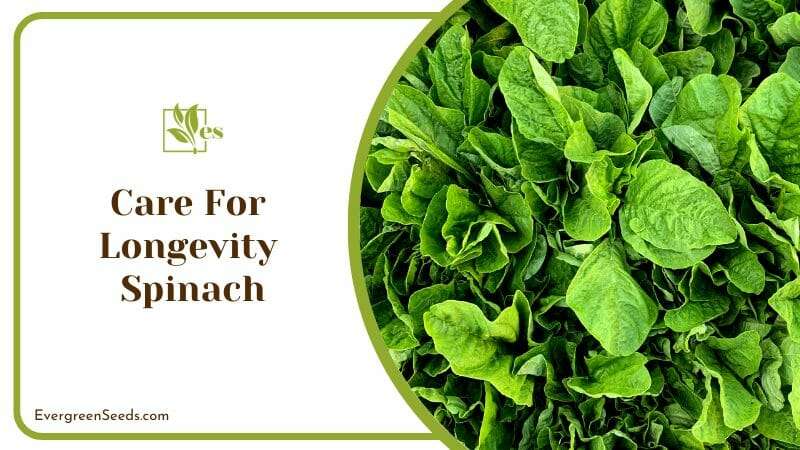
– Indoor Care
If you plan to care for your longevity spinach indoors, here are the requirements they need for them to thrive:
1. Watering
Watering your plants is just as important as the soil drainage of your plants. There is such a thing as too little and too much watering. Look at the top inch of the plant’s soil, allowing it to dry out between waterings. When you see that it is indeed dry, you need to water it.
Besides that, here are a few quick tips to follow when watering your longevity spinach plants:
- Do NOT water your plant daily. You have to ensure the soil won’t dry out completely, but also that it has enough time to absorb almost all the water. This will keep the roots healthy and hydrated for them to grow well.
- Do NOT pour water directly on your plant. Instead, water the soil around it, as pouring water on your plant would result in too much water absorption, leading to soggy and droopy leaves.
- The amount of water your plant requires will change throughout the year if you grow them outside, since the weather and temperatures change with the seasons. When winter comes and the temperatures cool, plant growth would slow, meaning your plants won’t need much water. If your environment’s temperature stays the same all year long — which happens when growing them indoors or in greenhouses — then watering should be consistent.
- What if you missed a week of watering your plants because you were out of town? This doesn’t mean you should give extra water to your plant. The frequency and amount of water you give to the plant depend on the soil’s moisture and if it is dry. If you notice no abnormalities, you should just resume watering as usual.
- Do NOT overwater your plant to make up for a few missed days from your watering schedule. Instead, focus more on keeping the soil’s moisture level balanced.
2. Light and Temperature Requirements
Longevity spinach needs a lot of sunlight, but not too much of it! It’s best to keep them under partial shade. If you place it under direct sunlight, it will grow, but your harvest will have a bitter taste. You also risk scorching the leaves, which leads to poor growth and development.
You can make your plant adaptive to the full sun through regular intervals instead. Doing so will prevent the roots from drying out. The ideal temperature for the plant is 70 degrees Fahrenheit. Avoid exposing it to extremely cold or hot temperatures that can affect its health and development.
Keep it indoors once temperatures reach 40 degrees Fahrenheit or below. If this isn’t possible, you can propagate from existing plants instead and plan to replant the offshoots come springtime. Those keeping their plant indoors and not having enough natural light must invest in a grow light to keep the plant thriving.
With that in mind, they grow best in USDA zones 9-11, so they are not cold-hardy. They grow best in southern states like in South Florida. Remember that this plant comes from Asian countries, where the weather is mostly warm and humid. That said, you can grow these as annuals in almost any other climate. Some have reported that they can plant longevity spinach outdoors in zone 6 from April to October.
3. Humidity Requirements
Compared to other plants, longevity spinach doesn’t need high humidity levels. Even then, you will need to focus on the moisture balance in the plant’s leaves and roots.
One helpful tip you might have seen is to mist your plant, which helps high humidity plants thrive in low humidity levels. With longevity spinach, this may be more troublesome. You need to keep the leaves dry to prevent diseases in its leaves, so avoid misting.
If you live in an area with extremely dry conditions, then consider getting a humidifier. If not, then this isn’t necessary for your plants.
4. Fertilization Requirements
When it comes to fertilizing your plant, do so quarterly. They do not require specific types of fertilizer, just as long as it’s nitrogen-rich. That’s why we recommend to use blood meal or fish fertilizer.
Please note that these plants don’t require fertilizer when planted in the ground, though it requires fertilizing when rowing in pots, as plants won’t take long to use up nutrients from the soil. However, the need for fertilizer mostly depends on the soil quality. If you see the plants looking sick or not growing at all, this means they need nutrients! You can opt for organic materials like earthwork castings or compost with water when watering your plant.
How To Propagate Longevity Spinach
Propagating plants helped you save cuttings throughout the winter season and/or if you live in colder climates. You should remove as many cuttings as you want and need, placing them in your indoor planters to thrive inside. But if you live in warmer climates where the plant grows as a perennial, you can start a new patch of the plant in different areas of the yard or indoors.
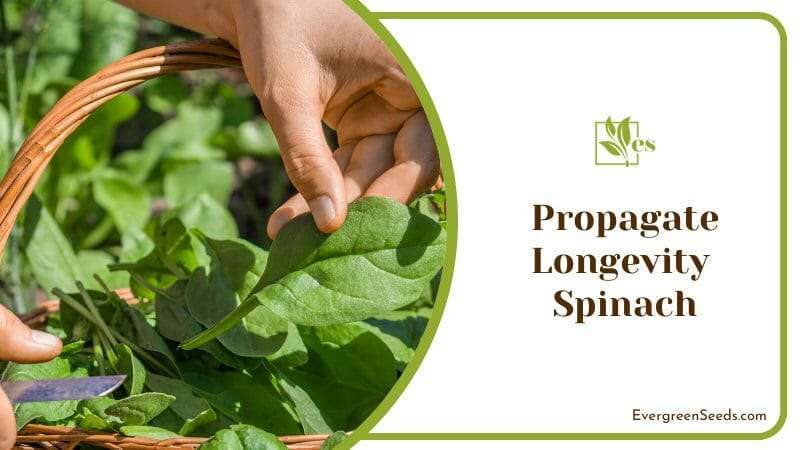
When it comes to propagating longevity spinach, it is pretty simple, with just three steps:
- Prepare the plant cuttings by cutting 1 to 18 inches from its stem or off a shoot. The cut needs to be just under a leaf. Remove most of the leaves, leaving just two or three on top of your cutting. Our experts recommend that you dip the cut end of the plant’s stem in a rooting hormone for better results.
- Place the plant cuttings in a pot with filtered water and soil. The temperatures should be between 65-75 degrees Fahrenheit for the next 10-14 days.
- Mist the cuttings daily to prevent them from during out, and expect them to root within two weeks. If you want lush growth, you may fertilize it every few weeks using a liquid organic fertilizer.
- You can repot them once you see new growth and ample root system on the stem cutting.
- For the following weeks, water the plant daily to maintain extra moist soil until it has the chance to root.
How To Harvest Longevity Spinach
There are two ways you can harvest longevity spinach. Just make sure not to harvest too many leaves at a time if your plant is still small and to wait until the plant has more than eight leaves before pulling some off. Also, harvest only the top 2 inches from every stem to promote plant growth and keep your plant looking compact and bushy.
The first method is to pinch off the plant leaves from all the stems’ tips. The other method to follow is to remove the leaves only from the longer stems.
Our experts recommend following the second method, as this promotes new growth and would be more manageable than the first one. However, when you harvest all the vines’ tips, this keeps the plant from spreading out, giving it a bushier appearance. So the harvesting method chosen is based on your preference.
After you built up the supply of your plants, then you can harvest leaves daily. They regrow quickly, so if you have larger plants, you can pick leaves daily to have a fresh supply of healthy spinach leaves all the time!
It’s best to harvest come spring and summer season when leaves are at their most tender, when the plant flowers, the leaves toughen up, which is why gardeners opt to pinch the flower buds off before they bloom. Pick the fresh and young tips straight before eating for a fresh taste for dishes.
When drying leaves for tea, opt for picking leaves when they are older. They are rich in bioactive compounds and have less water in their tissues than younger leaves, thus drying quicker.
Common Problems
You may come across a few issues when you grow longevity spinach. These issues are manageable, but it’s essential to identify these problems to prevent them from happening or prepare for solutions.
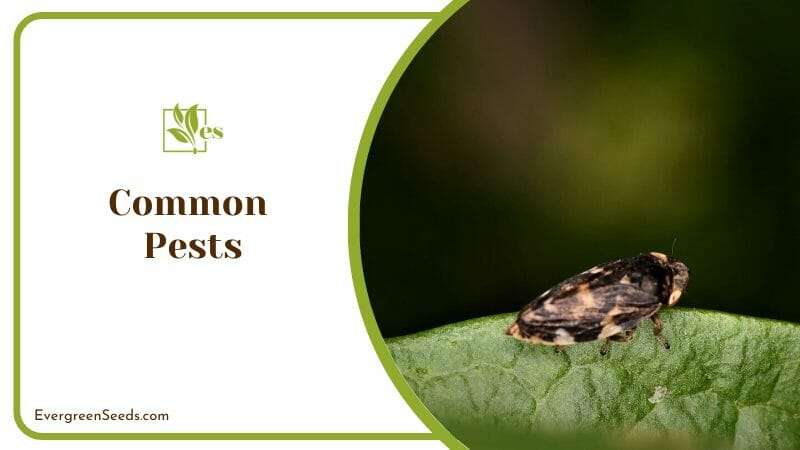
1. Pest Problems
This leafy vegetable is an edible plant, but it is resistant to pests. Unfortunately, there are still a few that can head to your plant for its nutrients.
One of the most common pests is the beetle, an enemy to watch out for. Besides this, you also have to look out for aphids and stress plants, causing damage to your longevity spinach. Not to worry, though, as it isn’t as troublesome as expected, with gardeners reporting little to no pests around.
If they do come, you can get rid of mites or whiteflies by washing them off under a sink or using organic pesticides such as Neem Oil. Be sure to check your plant for any leaf damage, such as holes. While the damage is minor, don’t let it worsen in the long run!
Aphids may also be a problem when you transfer your plants indoors, as natural pest control comes from the sunlight. They are also more common in this plant variety, like whiteflies. You can wash them off or use aphid spray, either homemade and organic or store-bought. Soapy water is also a good option if you’re in a pinch and want something affordable.
If ever you find infested stems and leaves, cut them off and discard them immediately. Don’t compost the insect-infected plant materials, removing them from the growing area immediately. This will prevent infestations and diseases from spreading.
2. Odd-Looking Leaves
You might have noticed that your leaves are turning yellow. This is a sign indicating nitrogen deficiency. The solution here is simple: Fertilize your plant with a nitrogen-rich fertilizer, such as blood meal or fish fertilizer. After your plant perks up, fertilize every three or four months.
There are also times that your leaves have white tunnels that run through them, indicating a leafminer larvae infestation. When this happens, remove the infested leaves, covering the plants afterward so you can protect them from the flies.
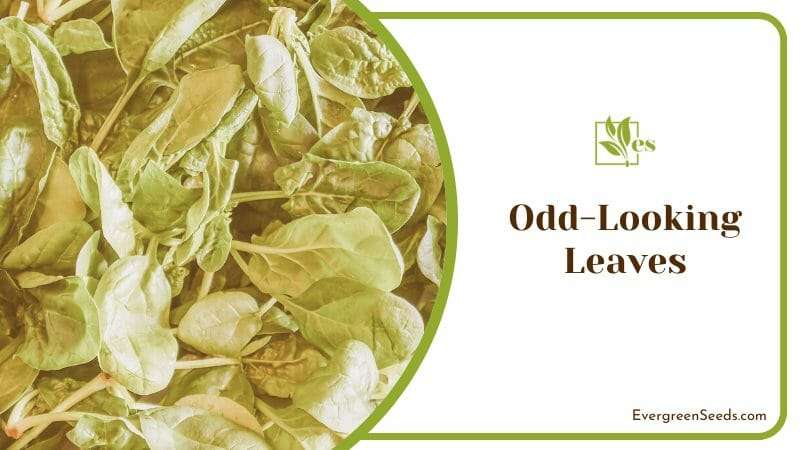
Sometimes, your leaves would have specks, accompanied by it yellowing and curling up. This is most likely a sign of a pest infestation, particularly from aphids. These are tiny green insects feeding off nutrient-rich liquids from plants.
Aphids would colonize under leaves, leaving a sticky residue known as honeydew. Aphids infestations are problematic since they multiply quickly. To get rid of the pesky and harmful pests, spray leaves with water and let them under the sun until it is dry.




